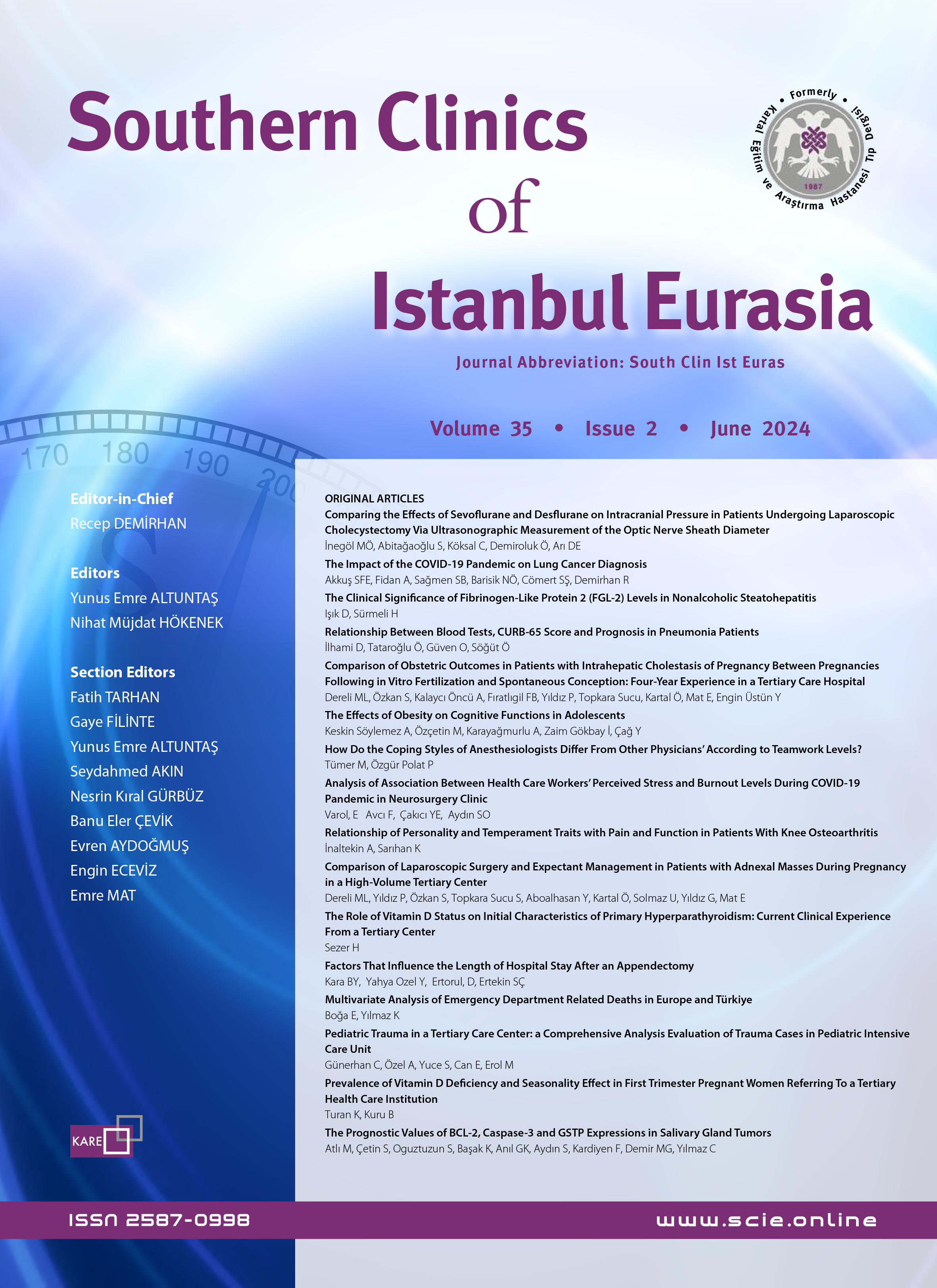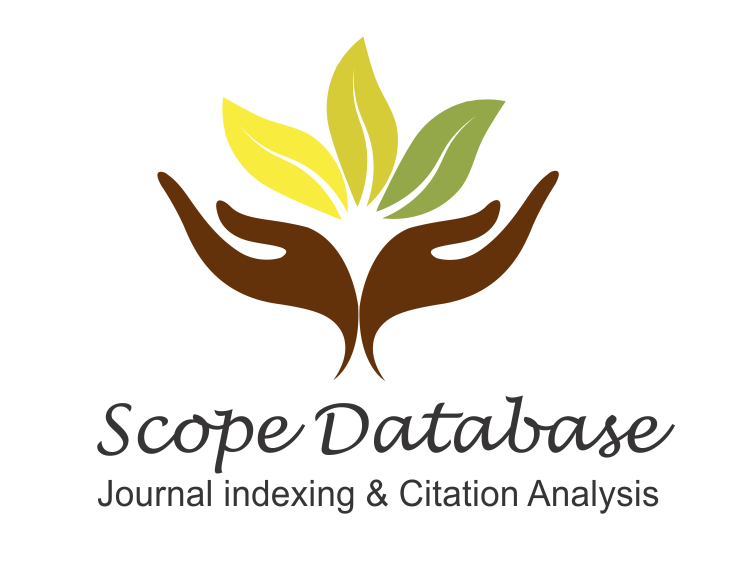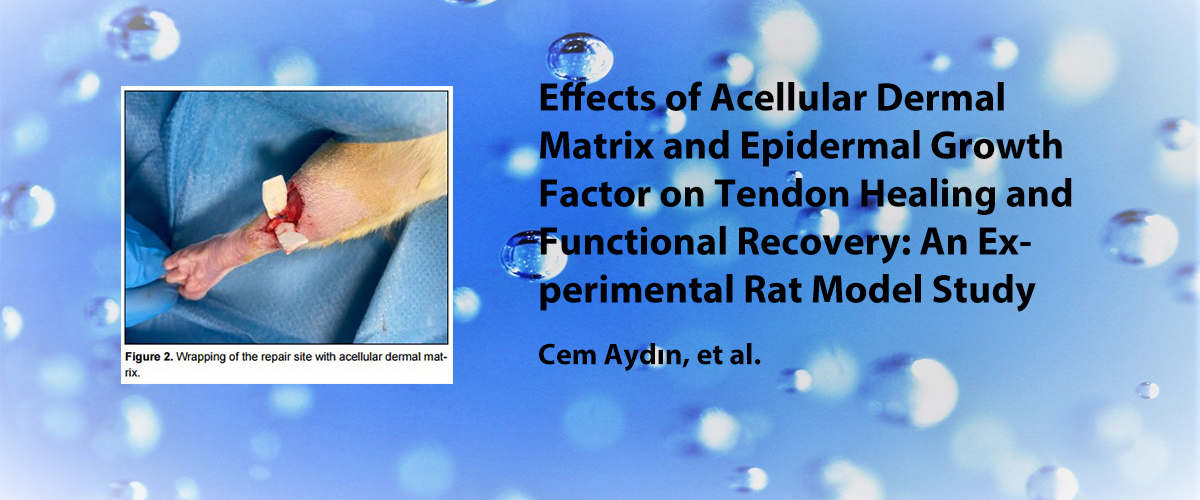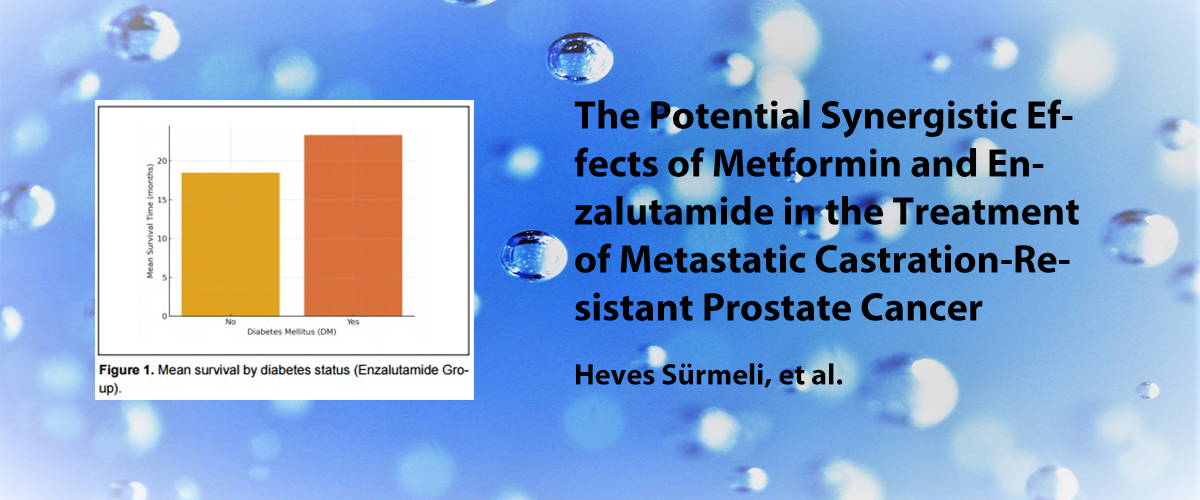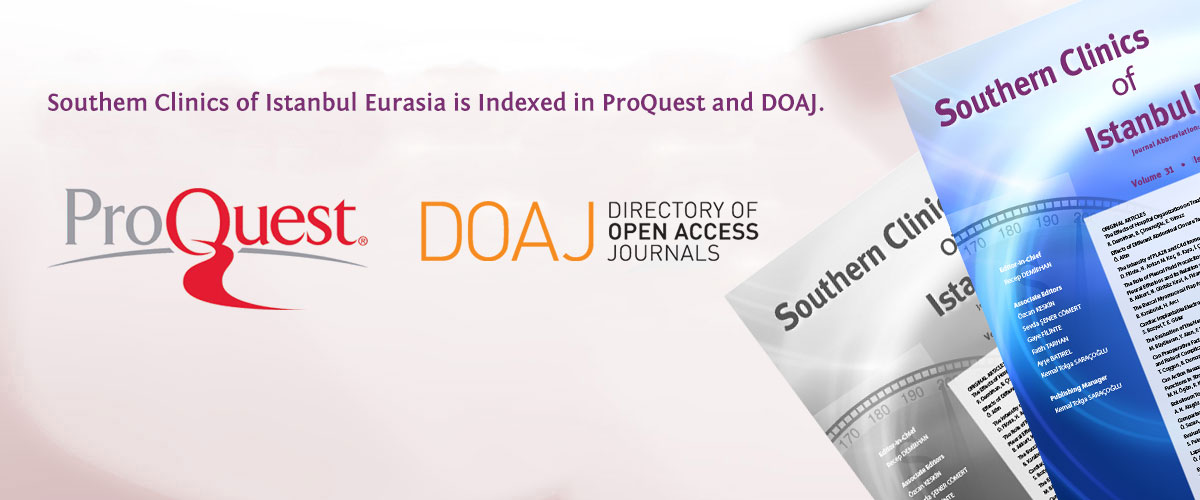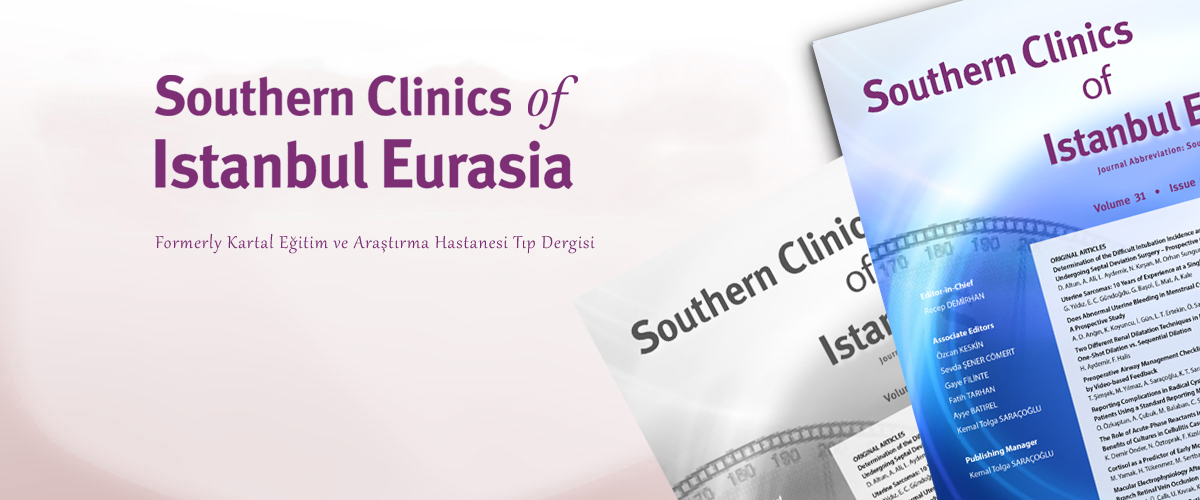ISSN : 2587-0998
ALTMIŞBEŞ OLGUDA DİAGNOSTİK HİSTEROSKOPİ BULGULARIMIZ
İlknur Aköz1Ankara Onkoloji Hastanesi, Kadın Hastalıkları KliniğiBu çalışma, Ankara Numune Hastanesi Kadın Hastalıkları ve Doğum Kliniği'nde değişik endikasyonlarla histeroskopiye alman 65 vakanın değerlendirilmesiyle yapıldı. Histeroskopik olarak, anormal uterin kanamalı 22 vakadan 6'sında normal uterin kavite, 7'sinde submuköz leiomyom. 3'ünde endometrial polip, 2'sinde servikal polip, 2'sinde endometrial hiperplazi, 2'sinde atrofik endometrium tespit edildi. Histeroskopinin, anormal uterin kanamada organik sebeplerin ayırımında, transvaginal ultrasonografiden sonra ikinci basamak tetkik olduğu ve ardından yapılacak probe küretaja yol gösterdiği saptandı. Histerosalpingografi(HSG)'si normal uterin kavite olarak değerlendirilen 16 infertil hastanın tamamında histeroskopik olarak da patoloji saptanmadı. HSG'de dolma defekti olan 11 hastadan 3'ünde ise bunu açıklayacak histeroskopik bulgu tespit edilmedi. Servikal eksternal orifisten ipi izlenemeyen RİA nedeniyle histeroskopi yapılan 9 vakadan 8'inde RİA'nın, kavite içinde olduğu saptandı ve 5'inde pozisyonu düzeltilerek yerinde bırakıldı. İnkomplet abortus sonrası rest küretaj yapılan 6 vakadan birinde plasental retansiyon ve uterus rüptürü şüphesi olan bir vakada da rüptür yeri tespit edildi.
Anahtar Kelimeler: HİSTEROSKOPİ,TANI, AYIRICI TANIDIAGNOSTIC HYSTEROSCOPIC FINDINGS IN OUR 65 CASES
İlknur Aköz1Ankara Onkoloji Hastanesi, Kadın Hastalıkları KliniğiThis clinical study was performed at Ankara Numune Hospital and 65 patients with different pathologies were examined by hysteroscopy. 22 patients with abnormal uterin bleeding were analysed. It was obtained that 6 patients had normal uterin cavity, 7 patients with submucosal leiomyoma, 3 patients with endometrial polyp, 2 with cervical poiyp, 2 with endometrial hyperplasia, 2 with atrophic endometrium. By this way, we think that hysteroscopy is secondary procedure to transvaginal ultrasonography when examining abnormal uterine bleeding. Hysteroscopy could be a guide to probe curettage. Both hysteroscopy and hysterosalpingography(HSG) gave same results in 16 patients with normal uterin cavity. 3 of 11 patients with filling defects in HSG were found that there was no reason to explain the pathology with hysteroscopy. 9 patients with missing intrauterin device were examined by hysteroscopy and it was found that 8 of them were placed in uterin cavity. 5 of all were corrected for normal position. 6 patients with incomplet abortion were examined by resting curettage and hysteroscopy. One of them had retantion of the placenta. When examining the patient with conspicion of rupture of the uterus, rupture site was located with hysteroscopy.
Keywords: HYSTEROSCOPY, DIAGNOSIS, DIFFERENTIAL DIAGNOSISMakale Dili: Türkçe


